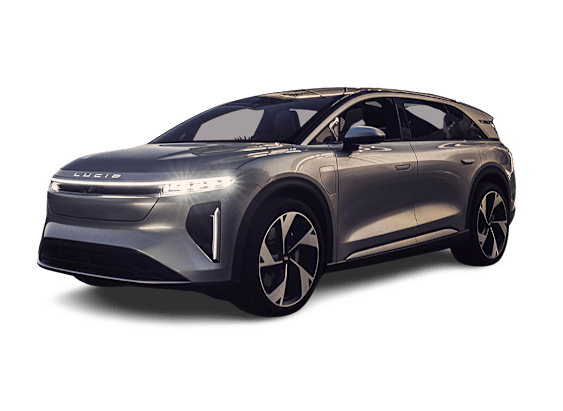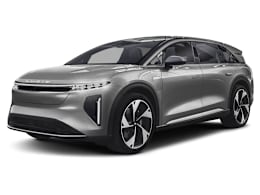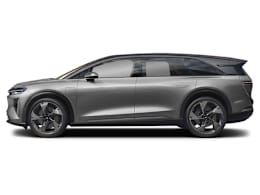Introduction
The 2026 Lucid Gravity Is Spacious and Fast, but Incomplete
The all-electric three-row SUV packs an impressive powertrain and lots of room for people and cargo. But you may want to wait until Lucid works out some glitches.Overview
Lucid Motors’ second model, the Gravity SUV, is a showpiece for the electric vehicle startup’s biggest strengths. It has a smooth, fast powertrain and a long driving range, all cleverly packaged to maximize space for both cargo and passengers. But, like the recent electric Volvo EX90 and Fisker Ocean SUVs, the Gravity is also not quite finished. Besides the several significant glitches our testers each experienced in the vehicle that Lucid lent us, some popular features won’t be available at the vehicle’s release.
This is disappointing because, on paper and on the road, the Gravity is a true electric luxury three-row super-SUV. Like Lucid’s first model, the Air sedan, the Gravity delivers on performance and range. But the glitches and other shortcomings we experienced—along with our experience with the Air and its predicted reliability—mean that the Gravity’s positive traits aren’t enough to cover for its early-build issues.
The performance and range, however, are excellent. There’s more than enough power to scare or delight the whole family—828 hp in the Grand Touring model we drove, to be exact. Like the Air sedan, the Gravity delivers all that power smoothly. Lucid says the Gravity can rocket from 0 to 60 mph in as little as 3.4 seconds. We haven’t yet run our own tests to confirm that figure (we’ll do that after we purchase a Gravity for our test program), but we can confirm that keeping a close eye on the speedometer after accelerating into traffic is a good idea. Through the turns, sharp, confident handling helps mask the Gravity’s large size and heavy weight. It’s a three-row SUV that’s actually enjoyable to drive on curvy roads.
The Gravity’s supercar-baiting performance may get the most attention, but it has other notable features that make it especially useful on a day-to-day basis. Lucid has become somewhat of a long-range specialist, and the Gravity continues that tradition: some versions are rated for up to 450 miles of range, per the Environmental Protection Agency. The model we drove had the same 20- and 21-inch wheels (front and rear, respectively) as the longest-range version, but takes a small efficiency hit from the extra weight of the optional third row, achieving “only” 437 miles of range. When hooked up to a DC fast charger with the battery at a low state of charge, the Gravity’s 926-volt architecture makes short work of adding back most of that range.
At launch, the Gravity is available in one trim: the Grand Touring, which starts at $94,900. A less expensive Touring model is set to go on sale in late 2025, with pricing and details to be announced closer to its on-sale date.
The Grand Touring model Lucid lent to Consumer Reports included several added-cost options: the DreamDrive 2 Pro advanced driver-assistance system; a third row of seats; a 22-speaker sound system; a Comfort and Convenience Package that includes acoustically and thermally insulated glass; a Nappa leather interior with ventilated and massaging front seats; and a dynamic handling package that includes a three-chamber air suspension. Consumer Reports plans on buying our own Gravity to formally test in the future, although it won’t be this highly optioned.


















